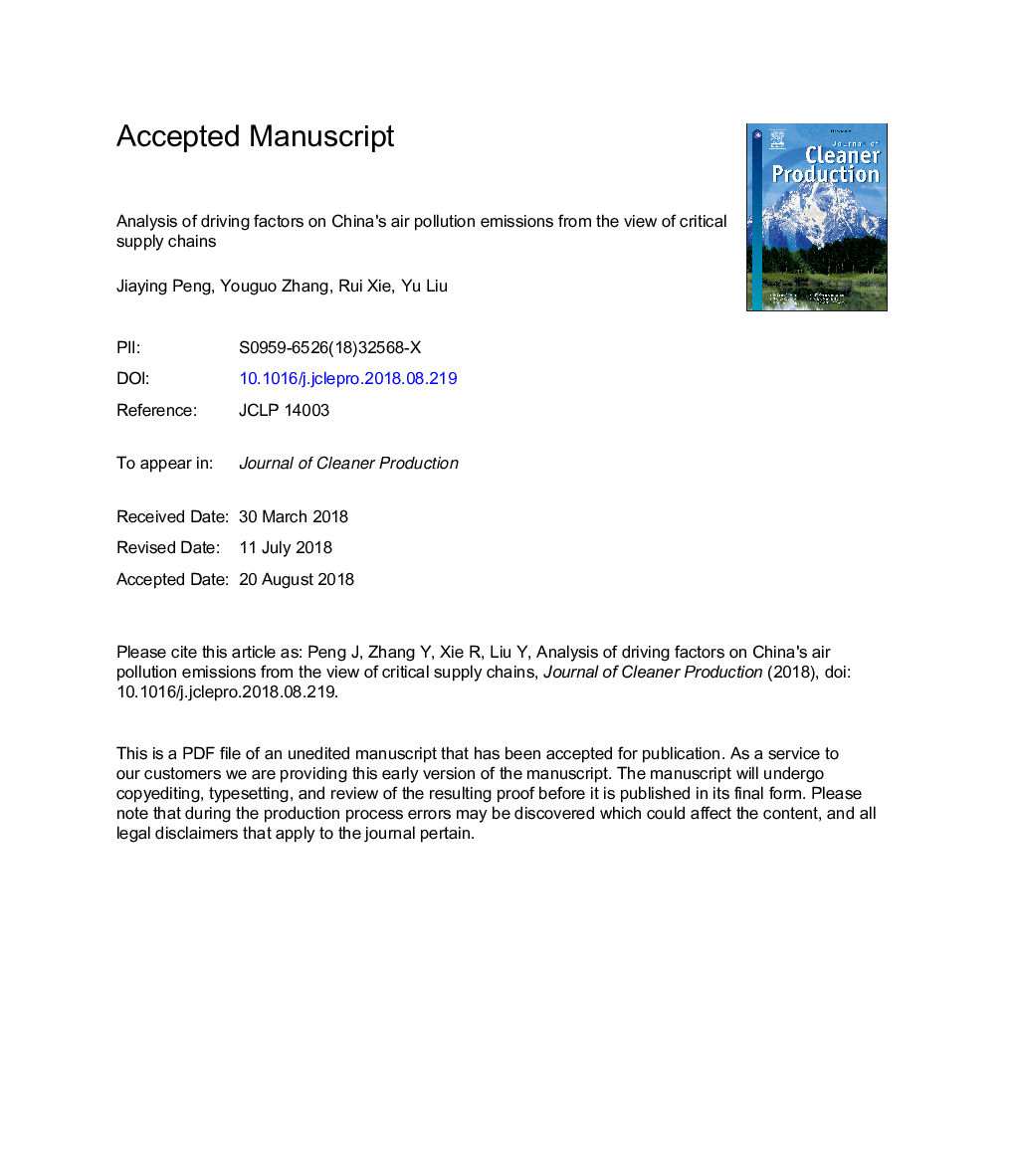| Article ID | Journal | Published Year | Pages | File Type |
|---|---|---|---|---|
| 8955725 | Journal of Cleaner Production | 2018 | 40 Pages |
Abstract
It is of great practical significance to trace the driving factors of air pollution problems, like haze, in China and identify the critical supply chain paths that cause changes in air pollution emissions. Based on a non-competitive (import) input-output model for China from 1995 to 2009, the impact of driving factors and supply chains that drive changes in air pollution emissions are identified, by using the methods of structural decomposition analysis and structural path decomposition analysis. The results show that economic expansion plays an important role in accelerating air pollution emissions, while decrease of sulfur oxide emissions intensity is the key factor to restrain growth of emissions. Fixed capital formation is the main driver of air pollution emissions, followed by household consumption and exports. Critical supply chains that drive changes in air pollution emissions are “electricity, gas, and water supplyâ fixed capital formation,” and “electricity, gas, and water supplyâ household consumption.” In these supply chains, there are four factors driving the increase in air pollution emissions: economic scale expansion (ÎY), intermediate input structure change (ÎL), final consumption category alteration (Îδ), and population scale expansion (ÎP ). Meanwhile, the decline of sulfur oxide emissions intensity (Îs) leads to a decrease in air pollution emissions. Our findings suggest that by adjusting energy consumption structure, guiding consumption and investment cleanliness, and optimizing intermediate input product structure, the reducing effects of sulfur oxide emissions intensity in critical supply chains can be enhanced, and effects of economic scale and intermediate input product structure can be promoted to change in favor of decreasing emissions.
Related Topics
Physical Sciences and Engineering
Energy
Renewable Energy, Sustainability and the Environment
Authors
Jiaying Peng, Youguo Zhang, Rui Xie, Yu Liu,
